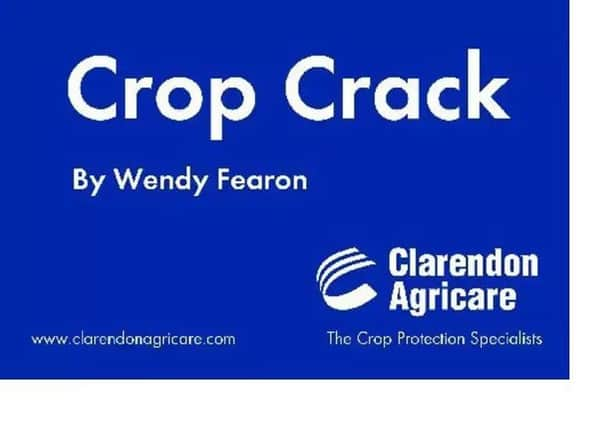Excellent conditions for cultivation


With a longer gap than usual between harvesting and drilling autumn crops, some stale seedbed cultivations have been carried out, to assist control of brome and other problematic grass weeds.
Be aware though, early drilling of crops brings its own problems. When temperatures remain mild, aphids numbers remain high and will quickly move into new crops as these emerge, therefore increasing the likelihood of BYDV infection in all emerged winter crops. Early drilling also increases the likelihood of disease infection. Lush crops of winter barley going into the winter are much more susceptible to Rhyncho and Mildew, as was prevalent last winter. Early drilling of winter wheat in particular significantly increases the likelihood of Take-all and an appropriate Take-all seed treatment should be applied as a matter of course. Winter oats are particularly susceptible to Mildew.
Annual meadow grass and broad leaved weeds
Advertisement
Advertisement
Annual meadow-grass (AMG) continues to be the most problematic weed in autumn cereals. If not properly controlled, this weed grass will continue to grow throughout most of the winter and once well tillered is impossible to control effectively. Flufenacet, available in various mixes, is the principle active in autumn herbicide programmes to control AMG, giving pre and post emergent activity of the weed grass. It has limited broad-leaved weed activity but is very effective on a wide range of other grass weeds, including all species of brome. Whilst HAMLET and OTHELLO are effective alternatives to flufenacet for controlling AMG in winter wheat, in the early spring, there are no such options for barley, rye or oats. The key to effective control in winter barley and rye is to apply flufenacet (not oats) before or soon after emergence of the crop, critically before the AMG has begun to tiller. Only when soil temperatures have dropped, pre-emergence of the crop is very effective and with GPS technology this is an option.
Other actives used at this time include pendimethalin (PDM) and diflufenican (DFF). PDM is also active on AMG but pre-emergent only. It is relatively insoluble and so persists for an extended period in the soil. PDM also has a wide broad leaved weed (BLW) pre-em spectrum, including chickweed and fumitory, but not groundsel. DFF is a residual with both pre and post emergent activity. It has no AMG activity but has a wide spectrum of BLWs including large chickweed and field pansy, but no activity on fumitory or groundsel.
FMC (formerly Headland) have introduced a new broad spectrum autumn herbicide called NUCLEUS, containing flufenacet and DFF. Whilst the grams of both actives are the same as LIBERATOR and therefore performs in an identical way in the field, NUCLEUS has a broader label with full approval for use on winter rye and triticale, alongside winter wheat and barley.
The persistency of any herbicide product that has residual activity is directly linked to soil temperature – the lower the temperature the longer the duration of its persistency. As soils cool in the coming weeks and months, product performance will improve the longer application is delayed into the winter.
Advertisement
Advertisement
Soil acting herbicides also require adequate soil moisture to work, but a persistently wet winter will also adversely affect performance, the more soluble actives being leached out of the soil, before the crop canopy has sufficiently covered the soil surface to prevent a late weed infestation reoccurring.
Manganese Deficiency
In known deficient soils, manganese should be applied during November. Treatment of the condition before deficiency symptoms are seen will mean stronger healthier plants going through to spring. A follow-up treatment should also be applied in the early spring.